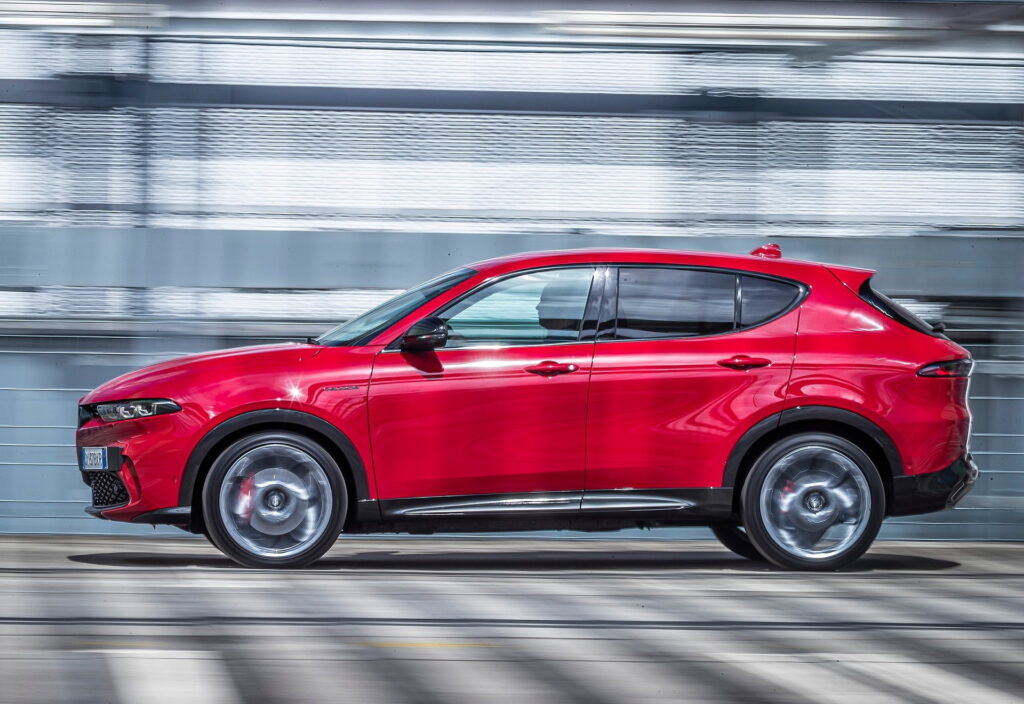
- The carmaking giant sold a tad over 1.3 million vehicles last year.
- By comparison, Detroit rival Ford sold 1.97 million vehicles in the US in 2024.
Stellantis didn’t just have a bad 2024—it had a very bad 2024. The year was capped off by the early departure of CEO Carlos Tavares, leaving the company without its leader more than a year before his planned 2026 retirement. Add to that a 15% slump in U.S. sales, and it’s clear the automaker is stumbling, hard. Still, even amid the chaos, one Stellantis brand managed to post a staggering 154% sales increase, though its actual sales numbers were so tiny, they barely move the needle.
var adpushup = window.adpushup = window.adpushup || {que:[]};
adpushup.que.push(function() {
if (adpushup.config.platform !== “DESKTOP”){
adpushup.triggerAd(“0f7e3106-c4d6-4db4-8135-c508879a76f8”);
} else {
adpushup.triggerAd(“82503191-e1d1-435a-874f-9c78a2a54a2f”);
}
});
Read: Dodge Sold A New Dart 8 Years After It Died, And A New Viper Too
For the full calendar year, Stellantis shifted 1,303,570 vehicles across the United States, a sharp 15% drop from the 1,527,090 sold in 2023. This performance puts the company well behind its domestic rivals: Ford, which increased its sales by 4.2% to 1,974,009 vehicles, and GM, which saw a 4% boost to an impressive 2.7 million units. Stellantis is clearly falling behind, and the cracks in its brand portfolio are painfully evident.
Jeep, Ram, and Dodge: A Story of Decline
window._taboola = window._taboola || [];
_taboola.push({
mode: ‘thumbnails-a-mid’,
container: ‘taboola-mid-article’,
placement: ‘Mid Article’,
target_type: ‘mix’
});
window._taboola = window._taboola || [];
_taboola.push({
mode: ‘thumbnails-oc-2×1’,
container: ‘taboola-mid-article-thumbnails-organic’,
placement: ‘Mid Article Thumbnails Organic’,
target_type: ‘mix’
});
The pain was shared across much of Stellantis’ core lineup. Jeep, the brand often thought of as its crown jewel, saw sales drop 9% to 587,725 units. This was driven by double-digit losses for key models: Grand Cherokee sales were down 12%, the Gladiator tumbled 24%, and the Renegade cratered by 68%. Even the Wagoneer, Stellantis’ pricey push into the luxury SUV space, saw a 48% drop in sales.
The lone bright spot? The Compass, which bucked the trend with a 16% sales increase, standing out as the only Jeep model to post a gain.
Ram didn’t fare any better. Overall sales fell 19%, largely due to a 16% drop in the brand’s bread-and-butter pickup trucks. Even the ProMaster van lineup, a rare bright spot in Stellantis’ commercial vehicle portfolio, posted a 19% decline.
Things were even worse at Dodge. Brand’s sales plummeted 29%, from 199,458 units to 141,730. This can be primarily attributed to the demise of the classic Charger and Challenger, which experienced sales declines of 54% and 40%, respectively. Sales of the Durango were also down 14% and both the Journey and Caravan were cut from the lineup. On the plus side, the Dodge Hornet, which enjoyed its first full year on sale, posted a 120% increase to 20,559 units, but even that bright spot couldn’t make up for the bloodbath elsewhere.
var adpushup = window.adpushup = window.adpushup || {que:[]};
adpushup.que.push(function() {
if (adpushup.config.platform !== “DESKTOP”){
adpushup.triggerAd(“bb7964e9-07de-4b06-a83e-ead35079d53c”);
} else {
adpushup.triggerAd(“9b1169d9-7a89-4971-a77f-1397f7588751”);
}
});
Dodge will attempt to reclaim some market share with the electric Charger Daytona that just went on sale and the new gas-powered Charger Sixpack variants later this year, but for now, the brand is in freefall.
Chrysler: A Minivan and a Prayer
Chrysler, once a cornerstone of the American auto industry, is now clinging to life with a lineup that’s down to just one model: the Pacifica minivan (and its fleet-focused Voyager twin). Sales dropped 7% to 124,683 units, as the brand said goodbye to its aging 300 sedan. While the Pacifica remains a solid option for minivan shoppers, it’s not enough to carry an entire brand. Unless Stellantis delivers new products soon, Chrysler may not have much of a future.

The Italians
var adpushup = window.adpushup = window.adpushup || {que:[]};
adpushup.que.push(function() {
if (adpushup.config.platform !== “DESKTOP”){
adpushup.triggerAd(“b25ecba7-3bbb-4ea7-a3a8-dbea91695c07”);
} else {
adpushup.triggerAd(“e46c436a-adeb-4b5e-a2c7-56bc36561c10”);
}
});
In contrast to the Jeep, Ram, and Dodge brands, Fiat had a surprisingly positive year. After nine straight years of declining sales, the Italian brand finally broke its losing streak with a 154% sales increase to 1,528 units. Yes, the total is hilariously small, but a win is a win, right? Much of Fiat’s improvement came from the 500, which saw its sales skyrocket by an absurd 7,983%, from just 12 units sold in 2023 to 970 in 2024. Sure, it’s still barely a blip on the radar, but it’s something. That said, demand for the 500 remains so low that Stellantis has already paused production of the model. Baby steps.
Meanwhile, Fiat’s sibling Alfa Romeo continues to flounder. Sales dropped 19% to 8,865 units, with the Stelvio down 41% and the Giulia dropping 33%. Even the launch of the Tonale compact SUV couldn’t stop the bleeding, though it managed to move 3,383 units in its debut year.
Stellantis USA Sales
SWIPE

